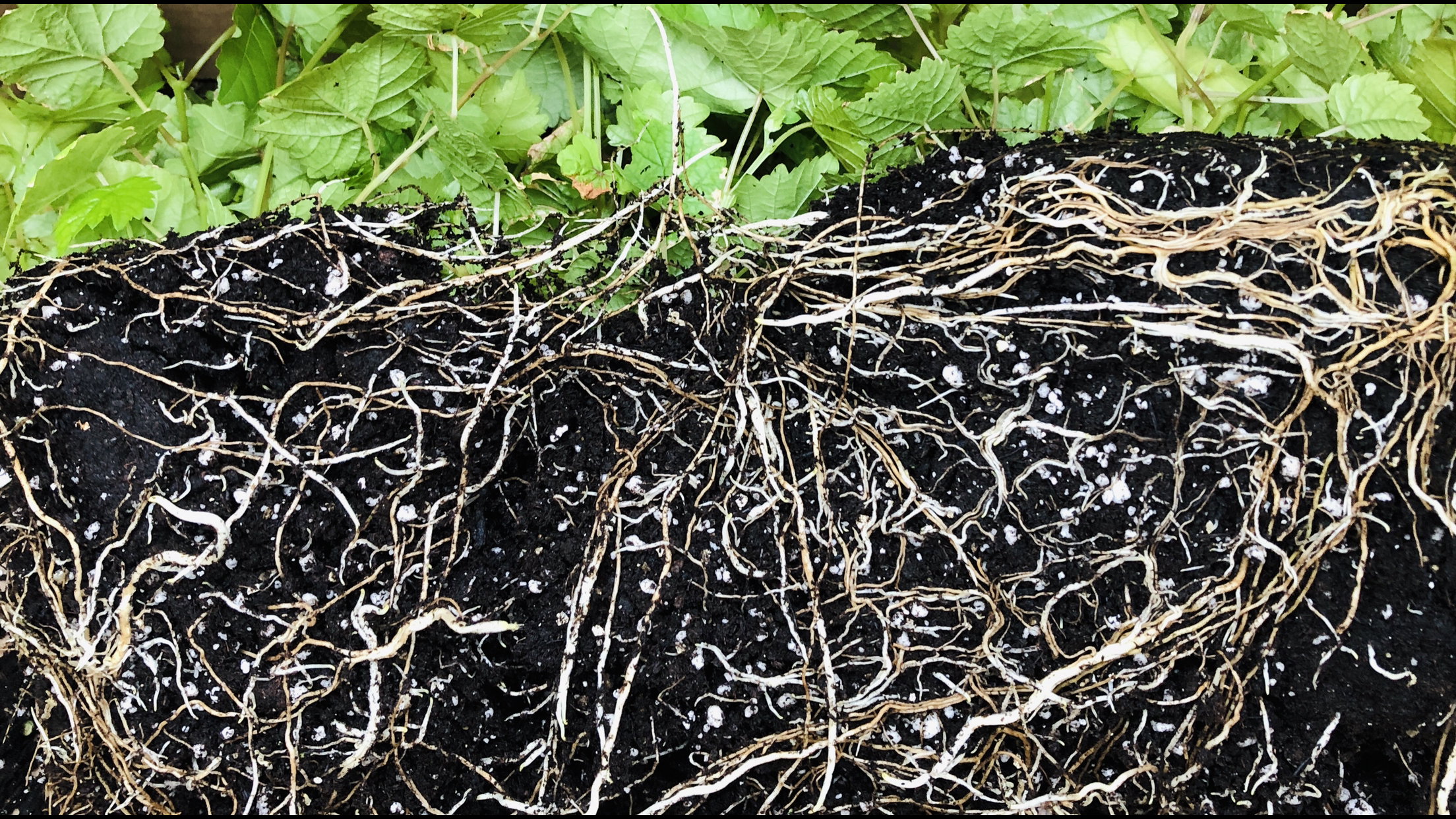
Our journey to sustainably
propagating grapevines.
Where did Vitis Vines come from?
At Vitis Vines, we’re all about growing more than just grapevines - we’re growing a community of curious, passionate, and down-to-earth growers who love learning and getting their hands dirty.
Since 2012, we've been deep in the research side of things, perfecting sustainable tissue culture techniques to propagate hardy grapevines right here in Nova Scotia’s beautiful Annapolis Valley. It started as a scientific pursuit, but pretty quickly we realized: we were growing a lot of vines .... and people were really interested.
So, we thought where can this go?
Today, we sell potted grapevines to backyard growers, hobbyists, foodies, and first-time winemakers across Canada. But we’re not just about selling plants. We’re here to support you from day one with hands-on advice, simple how-tos, and honest answers whether you're dreaming of sipping wine from your own vines, cooking with fresh grape leaves, or just adding some green charm to your fence.
We believe grape growing should be fun, accessible, and rewarding no matter your reason for planting. And if we don’t have the answer to your question, chances are we know someone in the wine or horticulturist world who does.
At the end of the day, we want to help you feel proud of what you’ve grown and excited to learn more. Because there’s nothing better than walking through your own little garden or mini vineyard and knowing you made that happen.
Welcome to the Vitis Vines community - let’s grow something amazing together.

Meet Our Team
Thomas Gregoire
Founder & President
Thomas Gregoire is the Founder and President of VITIS Vines, Inc., where he leads the company’s strategic direction, commercialization, and R&D initiatives. With a B.Sc. in Biology from Acadia University, he has a background in molecular genetics and plant science, which led him to explore grapevine tissue culture propagation. What started in a makeshift basement lab in 2012 has grown into a pioneering business focused on providing virus-free grapevines to growers across Canada.
Thomas is passionate about sustainable viticulture and agricultural innovation, working closely with industry partners, government agencies, and commercial clients to drive advancements in plant propagation. Beyond the business, his wife and two young daughters have been part of the journey from the start—helping cut up grapevines in the kitchen, watering plants at the greenhouse, or enjoying time together in the home garden. Nova Scotia is where they’ve chosen to plant their roots, both in family and business, inspired by all the region has to offer.
Jake Reicker
Lab Manager
Originally from Sussex, New Brunswick, Jake Reicker earned his B.Sc. in Biology from Acadia University in 2019, where he focused on botany and mycology. He is currently completing his M.Sc. in Molecular Ecology at UNB Saint John, while working full-time as Lab Manager at VITIS Vines, Inc. With extensive experience in laboratory research and plant science, he has held multiple roles in lab technician and agricultural research positions outside of academia.
Drawn to the Annapolis Valley’s growing wine industry, Jake saw an opportunity to contribute to sustainable agricultural innovation through tissue culture propagation. At VITIS Vines, he plays a key role in optimizing research trials, refining propagation techniques, and overseeing daily lab operations. A lifelong plant enthusiast, he has a habit of turning any available space into a mini greenhouse, constantly experimenting with new growing techniques. For Jake, the most fulfilling aspect of his work is being part of VITIS Vines' growth from the ground up, playing a hands-on role in shaping the future of sustainable viticulture.
Ivy Barkhouse
Lead Tissue Culture Technician
Ivy Barkhouse holds a degree in Environmental Science from Acadia University and brings a diverse background in plant research and laboratory work. During their studies, they worked as a Co-op student at Agriculture and Agri-Food Canada’s Kentville Research and Development Centre, where they developed a strong passion for agriculture and plant science. They later gained hands-on experience at the Irving Environmental Science Centre, working in the gardens, herbarium, seed bank, and tissue culture lab—the latter sparking their deep interest in clonal propagation.
Originally from Lockhartville, Nova Scotia, Ivy was drawn to VITIS Vines, Inc. by the opportunity to work at the intersection of plant science and laboratory research. They find tissue culture fascinating, particularly the ability to propagate plants on artificial media without soil and enjoy the precision and structure of working in a lab environment. Outside of work, Ivy is an avid reader and writer of fantasy fiction, bringing the same curiosity and creativity to their scientific pursuits.
Dariana Pereira
Lab & Operational Support Technician
Dariana Pereira is a dedicated Lab & Operational Support Technician with a strong background in plant science. Originally from Venezuela, she studied Agroecological Engineering for four years before relocating to Canada. Her passion for nature and hands-on experience in plant cultivation make her a valuable asset to the VITIS Vines team. Prior to joining the company, she volunteered as a gardener at the Valley Community Learning Association, where she honed her practical skills in plant care and sustainable growing methods.
In the lab, Dariana is known for her precision, attention to detail, and enthusiasm for learning. She enjoys the structured processes of tissue culture work, ensuring that every step follows exact protocols to achieve optimal results. Outside of work, she has a creative eye for photography, capturing landscapes, flowers, and food. She is committed to expanding her skills in plant biology and contributing to advancements in tissue culture and greenhouse operations.





